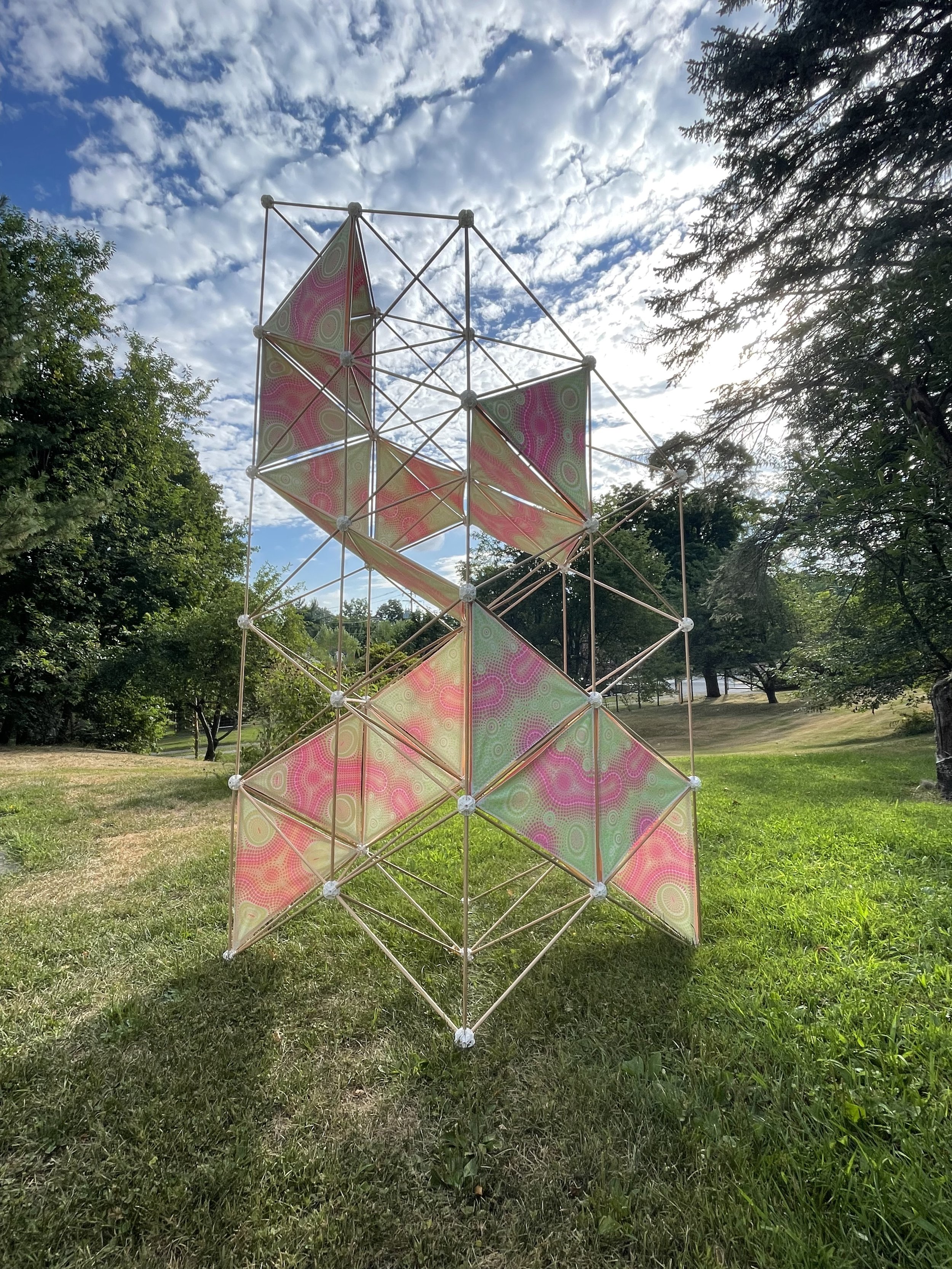Response patterns
Response Patterns invents environmentally responsive embellishment methods for textile, including silk screening with photochromic pigment and 3D printed embellishment. We see this use of technology as a natural progression in textile craft - which has historically imbued place into both its materiality and imagination.
The Center for Craft's Materials-Based Research Grant 2020, supported a collaboration between faculty from the Parsons MFA Textiles program and leveraged interdisciplinary experience—Yuchen Zhang’s knowledge in material science and interactive technology, Travis Fitch’s methodical study of architecture, geometry and digital fabrication, and Anette Millington’s expertise in textile art and embellishment.
coded textile
The Coded Textile Project uses computation to explore materials and meaning in textile embellishment. In the context of the project, “coded” is a process of designing a system of signs, organized by rules, procedures and relationships, using either analog or digital tools. Here machine thinking generates new possibilities for print, embroidered/embellished and woven design.
The project also takes the approach that textile embellishment is itself a “code”- storing information, abstracting meaning, formulating new symbols or communication systems. The relationship of embellishment to location is central to this investigation of “embellishment semiotics”. Our digital sketches and textile outputs explore how technology impacts the interaction of surface design and environment.
The Lineage Series is an abstraction of a family tree and uses a coded process, similar to dna inheritance, to evolve. The coding for this project is based on evolutionary networks of natural selection, genetics, and syntax tree diagrams.
LINAGE: EMBROIDERY
The unit system for the lineage is based on 54 shapes that reference architectural ornamentation. These shapes serve as the “dna” or “letters” that are combined according to symmetry rules.
LINAGE: WEAVE
The bloom clusters and systems series mine the potential of computation to add new possibilities for print to take on natural actions- such as organic growth, cell division, and aggregation as well as interaction across the “pattern ecosystem”.
BLOOMS: DYNAMIC PRINT SYSTEM
The Fragment series makes chaos of order, and new meaning from chaos. The series demonstrates how bilateral symmetry mimics life and the functions of stacking, scale change and location result in analogies of gardens and growth.







